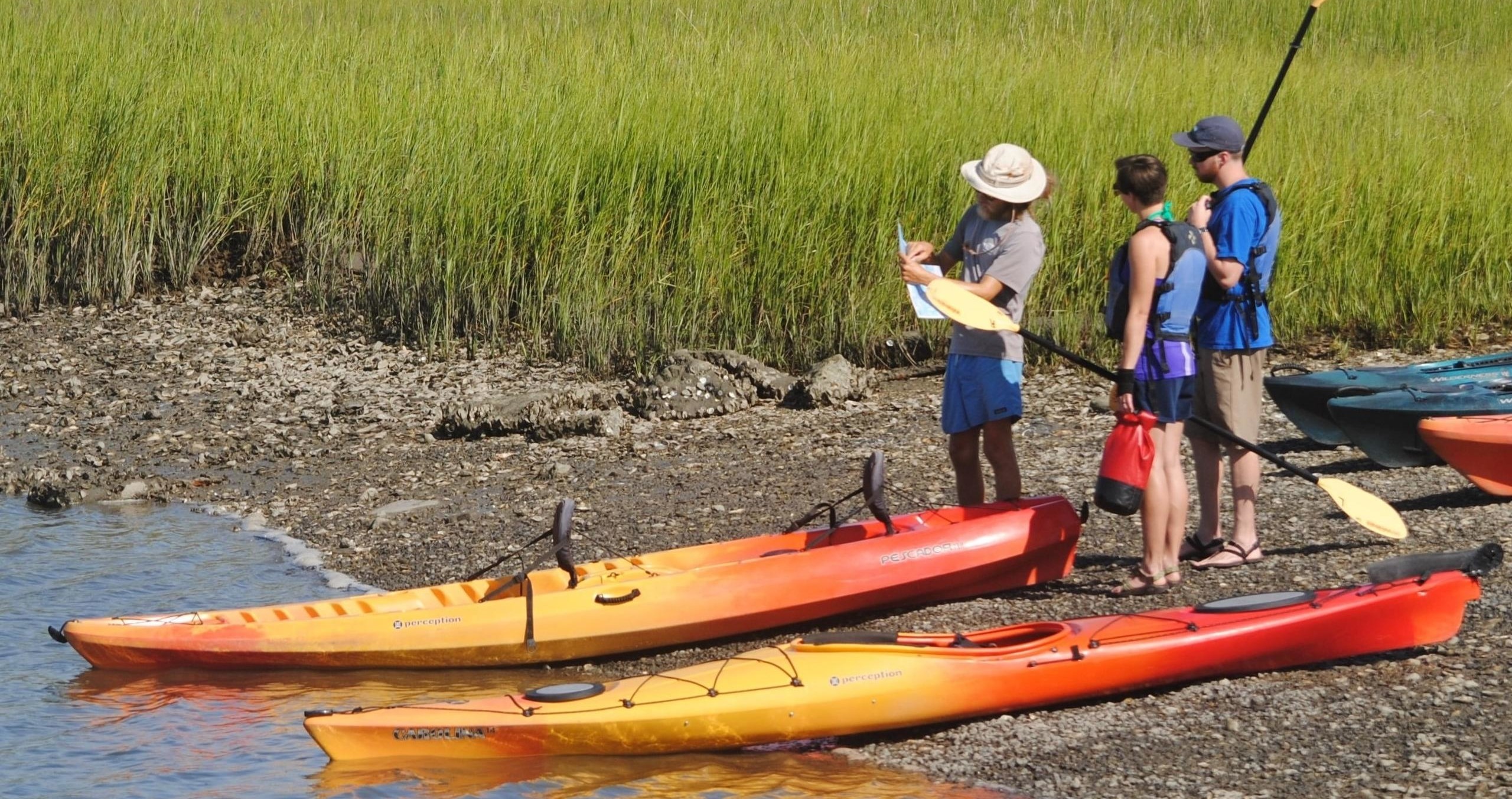Tide-Driven Freedom: Kayaking Charleston’s Lowcountry in Four Easy Hours
Ride the tide, thread the creeks, and let Charleston’s marsh show you how to paddle with the coast—not against it.
At slack tide, the marsh exhales. The spartina flattens into a green quilt and the creeks, slick as glass, seem to whisper—go now. You slide a kayak off the dock and the pluff mud gives its earthy hello, that briny perfume the Lowcountry wears like a signature. Dip a blade and the creek welcomes you, an easy pull seaward as if the current has decided you’re worth showing around.
Trail Wisdom
Plan Your Launch Around the Tide
Aim to launch on the last hour of the ebb or the first hour of the flood to enjoy a helpful push out and an easier return.
Footwear for Oyster Country
Wear hard-soled water shoes—oyster shells are razor-sharp and hidden just under the surface along muddy banks.
Beat Heat and Glare
A sun hoody, polarized sunglasses, and a brimmed hat keep you cooler and help you spot shallow bars and wildlife.
Read the Marsh Landmarks
Use channel markers, distinctive bends, and tall spartina clumps as mental waypoints; the creeks can look similar at high tide.
Local Knowledge
Hidden Gems
- •Quiet side creek spurs off the main channel at mid-tide—ideal for birdwatching
- •Sunset vantage near an oyster reef edge where dolphins often feed
Wildlife
Bottlenose dolphin, Osprey
Conservation Note
Avoid stepping on or dragging boats across oyster reefs, and give wildlife a wide berth. Pack out all trash—marsh plastics quickly become microplastics.
These marshes supported Gullah Geechee communities and later saw conservation efforts to protect oyster reefs and tidal wetlands from development.
Seasonal Guide
spring
Best for: Mild temps, Active birdlife
Challenges: Windy afternoons, Pollen
Spring brings comfortable air and clear mornings—ideal for longer exploratory loops before afternoon breezes build.
summer
Best for: Warm water paddles, Long daylight
Challenges: High heat and humidity, Pop-up thunderstorms
Start early or go late to dodge peak heat; keep an eye on radar and bring extra water and electrolytes.
fall
Best for: Stable weather, Fewer bugs
Challenges: Occasional king tides, Cold fronts
Crisp air and glassy creeks make fall the prime season; plan around big tide swings for easier navigation.
winter
Best for: Quiet water, Clear skies
Challenges: Chilly winds, Short days
Layer up and pick calm days; you’ll be rewarded with solitude, easy parking, and superb visibility for wildlife.
Photographer's Notes
What to Bring
Hard-Soled Water ShoesEssential
Protects feet from sharp oyster shells and provides traction on muddy launches.
Sun Hoody or UPF ShirtEssential
Shields skin from intense UV while staying breathable on hot, reflective water.
Dry Bag (10–15L)Essential
Keeps phone, map, snacks, and an extra layer dry when splashes or rain roll through.
Polarized Sunglasses
Cuts surface glare so you can read depth changes and spot wildlife more easily.
Common Questions
Do I need prior kayaking experience?
No. Basic instruction, a fitted PFD, and a route/tide briefing are included, making it suitable for first-timers.
How far can I paddle in four hours?
Most renters comfortably cover 4–7 miles depending on tide and wind; plan an out-and-back with the current to maximize range.
Are there dolphins in these creeks?
Yes. Bottlenose dolphins are frequently seen, especially near confluences and deeper channels—give them space and do not chase.
What about tides and currents?
Charleston’s tides average 5–6 feet; launch near the turn of the tide to avoid fighting strong flow and consult the provided tide chart.
Can kids participate?
Yes. Tandem sit-on-tops are a good choice for families; children should be comfortable wearing a PFD and following basic safety instructions.
Where do the rentals launch from?
Launch points are on calm creeks near Folly Beach/Charleston’s marsh system; exact details are provided at booking and check-in.
What to Pack
2L of water per person for summer heat; hard-soled water shoes for oyster shell protection; sun hoody and polarized sunglasses for UV and glare; small dry bag with snacks, phone, and a printed tide chart.
Did You Know
In 2021, South Carolina designated the smell of pluff mud as the state’s official smell—a nod to the Lowcountry marsh that defines the coast.
Quick Travel Tips
Book a morning or late-afternoon slot to catch cooler temps and calmer water; Check tide tables for Charleston Harbor and launch near slack tide; Parking fills on summer weekends—arrive 20–30 minutes early; Post-paddle, rinse gear to remove salt and pluff mud before stowing.
Local Flavor
After your paddle, head to Bowens Island Restaurant for roasted oysters and creekside views, or cruise to Folly Beach for tacos and cold beer at Chico Feo. In town, grab a pint at Revelry Brewing and a plate of shrimp and grits to complete your Lowcountry day.
Logistics Snapshot
Closest airport: Charleston International (CHS). Launch/checkout: marsh creeks near Folly Beach (approx. 25–30 minutes from downtown Charleston). Cell service: generally good but spotty in back creeks. Permits: none required for recreational paddling; PFD required and provided with rental.
Sustainability Note
Oyster reefs are living shorelines that filter water and protect the coast; never step on them and keep a safe distance. Pack out everything you bring, and give dolphins and birds the right of way.
